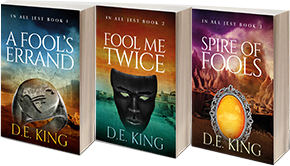Jester in Books
On the page the jester can be seen to be a clever and witty character, both in representations of characters who play the role of a fool and those who fit into the jester archetype.
The jester archetype is all about those hilarious and witty characters you often encounter in stories and myths. They’re the ones who bring the laughs, challenge the status quo, and make you think with their clever jokes and playful antics. Whether they’re dressed in vibrant motley costumes or armed with a quick wit, jesters entertain us with their humour and bring a sense of light-hearted mischief to the narrative.
They remind us that laughter is powerful, that we should question the rules, and that sometimes the most profound insights can come from behind a mask of comedy.
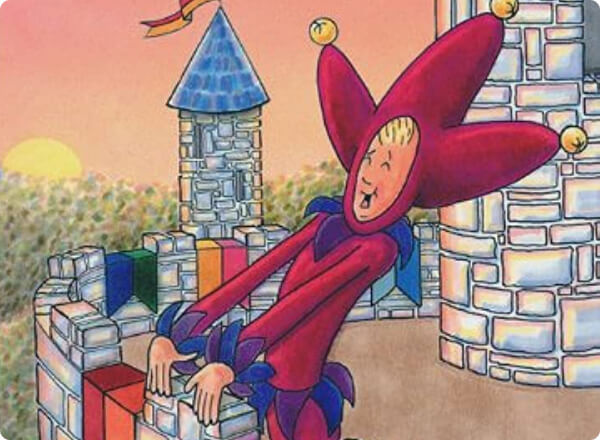
The Jester Has Lost His Jingle | David Saltzman
Jester archetype characteristics
Some key jester archetype examples and jester personality traits of the comic relief characters include:
Laughter’s Ambassador
Jesters embody the spirit of laughter, serving as ambassadors of mirth and joy. They wield humour like a gleaming sword, bringing smiles and chuckles to brighten the darkest of moments.
Verbal Acrobats
Jesters perform linguistic gymnastics, flipping words and phrases with nimble agility. They are masters of wit, executing linguistic pirouettes and somersaults to elicit laughter and surprise.
Mischievous Magicians
Jesters possess a touch of enchantment, like mischievous magicians who conjure laughter with their whimsical tricks and amusing antics. They turn the ordinary into extraordinary, sprinkling the world with laughter’s enchanting dust.
Mirror of Folly
Jesters reflect the follies of the world, holding up a mirror that distorts reality with laughter. Through satire and clever jests, they expose the absurdities of society, inviting introspection and prompting change.
Philosophical Clowns
Jesters wear the mask of the clown, their painted smiles concealing profound thoughts and hidden wisdom. They navigate the realms of comedy and tragedy, reminding us that beneath laughter’s facade lie deeper truths.
Ambassadors of Freedom
Jesters relish the freedom to challenge conventions, question authority, and speak their minds with impunity. Like court jesters fearlessly jesting with kings, they embody the rebellious spirit that encourages critical thinking and societal evolution.
Tricksters with Heart
Jesters are mischievous tricksters who playfully dance on the boundaries of what is expected. With mischievous hearts, they employ humour and jest to gently coax us into seeing the world through a different lens.
Emotional Alchemists
Jesters possess the power to transmute sorrow into laughter, turning tears into smiles. They have a unique ability to touch hearts and heal wounds, using humour as a salve for the soul.
Whimsical Chameleons
Jesters are versatile performers, adapting to any situation with chameleon-like ease. They seamlessly shift from jest to seriousness, from comedy to introspection, providing a kaleidoscope of emotions and perspectives.
Eternal Harbingers of Joy
Jesters carry the torch of merriment through the ages, forever etched in the tapestry of storytelling. Their legacy endures as eternal harbingers of joy, reminding us to embrace laughter, find delight in the unexpected, and revel in life’s delightful absurdities.
Characters in books that represent the jester archetype
Some famous examples that use the jester archetype in books might include some characters you are well familiar with.
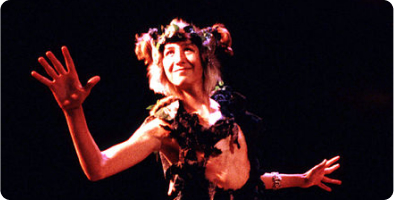
Puck | Carmel Shakespeare Festival
Puck from “A Midsummer Night’s Dream” by William Shakespeare
Puck, also known as Robin Goodfellow, is mischievous and playful. He serves as a jester-like character, creating chaos and confusion with his magical tricks and whimsical nature.
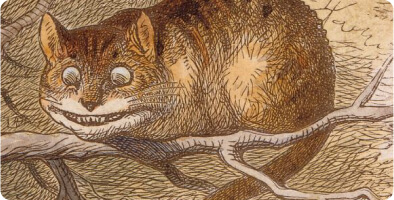
The Cheshire Cat | John Tenniel (1865)
The Cheshire Cat from “Alice’s Adventures in Wonderland” by Lewis Carrol
The Cheshire Cat is known for its enigmatic smile and clever wordplay. It serves as a trickster-like character, offering cryptic advice and adding a sense of whimsy to Alice’s journey.
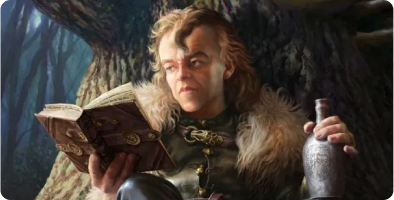
Tyrion Lannister | © Fantasy Flight Games | Alexander Karcz
Tyrion Lannister from “A Song of Ice and Fire” series by George R.R. Martin
Tyrion, known as the “Imp,” possesses a sharp wit, intelligence, and a penchant for making clever quips. He uses his words as weapons, often employing humour to navigate the complex political landscape of Westeros.
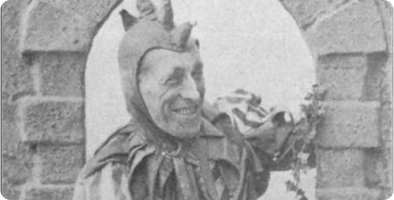
Luis Hendricus Chrispijn – Onze Tooneelspelers (1899)
Feste from “Twelfth Night” by William Shakespeare
Feste is a wise fool and jester in the play. He engages in wordplay, sings songs, and provides insightful commentary on the events and characters of the play, often using humour to reveal truths.
These characters exemplify the jester archetype in books, with their quick wit, comedic talents, and ability to offer insightful commentary. They add depth, entertainment, and a touch of whimsy to the stories they inhabit.
Books with characters who are jesters
Not all characters in books simply represent the jester archetype, there are many examples on the page of characters who play the role of a fool or jester in the literary world. In literature many authors have used the profession of the court jester as a key part of their own stories. These entertaining characters follow the historical role of the jester in fantasy and wider fiction.
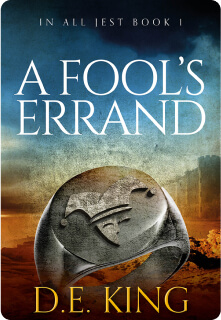
A Fool’s Errand | D.E.King
The series “In All Jest” by DE King follows a secret society of jesters
This series begins with “A Fool’s Errand” in which we are introduced to some colourful jesters and dive into a world with many secrets. The first book primarily follows Lani as begins her quest and gets tangled in the mysterious secret society.
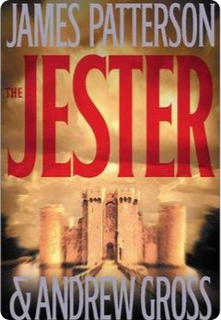
The Jester | James Patterson
Set in mediaeval France, “The Jester” by James Patterson and Andrew Gross
is a historical thriller follows the journey of Hugh De Luc who seeks justice to avenge the loss of his family. The story combines adventure, suspense, and the role of jesters in mediaeval society.
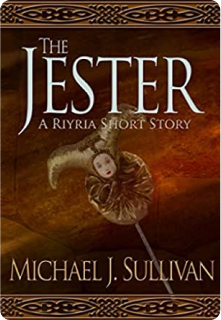
The Jester | Michael J. Sullivan
The fantasy novel “The Jester” by Michael J. Sullivan is the story of Royce Melborn
a skilled thief, and his companion Hadrian Blackwater. Royce’s witty banter and clever tactics give him a jester-like quality, adding humour and levity to their adventures in a world of knights, magic, and political intrigue.
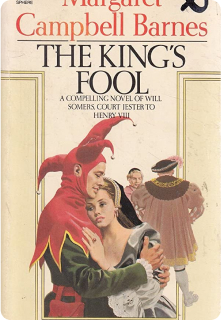
The King’s Fool | Margaret Campbell Barnes
“The King’s Fool” by Margaret Campbell Barnes
is a historical fiction novel that explores the life of Will Somers, the jester to King Henry VIII of England. It delves into the political and personal dramas of the Tudor court, with Somers providing a unique perspective through his role as the king’s confidant and entertainer.
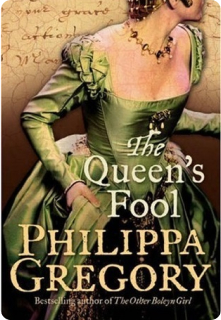
The Queen’s Fool | Philippa Gregory
“The Queen’s Fool” by Philippa Gregory
is a story of a Jewish girl who is on the run and hides in guise as a Holy Fool, acting as a spy. This is set during the Tudor times and references some notable characters of history.
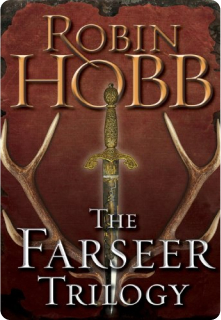
The Farseer Trilogy | Robin Hobb
The “Farseer Trilogy” by Robin Hobb
is a story following a bastard prince called Fitz and his journey navigating the dangers of the court and finding his place in the world. The character of “The Fool” wears a motley costume and carries a sceptre, he is an integral part of the series and helps Fitz progress his story.

